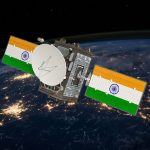For many still, the words ‘Aerospace’ and ‘Pakistan’ don’t go together, well they aren’t wrong either as Pakistan is so out of the picture in Space World. In this article, we will be looking at how things started, successes, failures, and what the future might hold for Pakistan.
The Beginnings
Pakistan started its Space journey in 1961 with the establishment of the National Space Agency SUPARCO. The prime focus of the agency was to develop and research Space Technology in Pakistan.
As the 60s begin so did the race between the US and the Soviet Union to land the first human on Moon. Therefore, NASA begins the search to find a suitable location to study the atmosphere begin, the Indian Ocean came to be the most suitable to investigate the wind dynamics of the upper atmosphere.
Keeping in view Pakistan’s alliance with the United States during Cold War Era, Pakistan naturally became a partner to Washington’s goal of a lunar landing. This got Pakistan to launch its first rocket Rehbar-1 on 7th June 1962 becoming the only 3rd country after Japan and Israel to achieve the feat. This was a huge start for Pakistan but this came with a prerequisite US condition that the data would be shared with NASA.
Rehbar was a 2 stage rocket with its primary mission to study wind structures of Earth’s upper atmosphere. It also provided insights into the weather conditions of the Arabian Sea. This also led to the creation of a Doppler radar tracking station in the country.
Solidifying the early success
SUPARCO needed to explore Satellite technology after the successful launch of Rehbar-1. Hence SUPARCO established its Remote Sensing Research Group. Findings of this group meant Pakistan establish National Remote Sensing Centre also called ‘Resacent’ in 1980. Its main purpose was to read remotely sensed data.
Pakistan also became a member of various International organizations for cooperation in that period.
The Downfall
During the early 90s, Pakistan deepened its relations with China. This relation helped Pakistan launch its first experimental satellite Badr-I from the Xichang Launch Centre on 16th July 1990.
This development and Pakistan’s Nuclear ambitions didn’t sit well with Washington. Pakistan’s war against the Soviet Union in Afghanistan meant budget cuts to SUPARCO. Pakistan’s next achievement was Badr-II in 2001 being equipped with mapping instruments and PAKSAT-1 in 2002.
The Future with Vision 2040
It has been predicted that the global space market size is projected to grow from USD 9.4 billion in 2020 to USD 15.3 billion by 2025 at a compound annual growth rate of 10.2%.
Pakistan fulfilled its longstanding wish of launching a communications satellite in August 2011, PAKSAT-1R aided once again by China, a month after Pakistan’s National Command Authority met and laid down the Space Program 2040, which subsequently came to be known as the Space Vision 2040. Under this program, Pakistan plans to launch a total of six Geosynchronous Equatorial Orbit (GEO) satellites and five (LEO) Low-Earth Orbit satellites.
Furthermore, under the shadow of the China Pakistan Economic Corridor (CPEC), cooperation between the two sides has made it to space as well. With the purchase made from China of the Pakistan Remote Sensing System (PRSS-1) and the indigenously built Technology Evaluation Satellite (PAKTES-1A), in 2018 Pakistan saw both these satellites launched into orbit via China’s own Long March rockets. With these two satellites now in orbit, Pakistan can effectively address the internal water disputes that are prevalent between the provinces regarding the share of water for each province. Since the PRSS-1 can provide credible imagery for management and planning.
Conclusion
The space industry will be greatly beneficial for our country in two cases: In the form of the economy with jobs as well as various major national issues such as security concerns with the Indian Space Research Organization (ISRO) despite being eight years younger than Pakistan’s SUPARCO, is now the dominant space operation in South Asia and the progress that ISRO has made in recent decades speaks volumes of how a well-directed effort, with requisite support in place, can make an institution a hallmark of national prestige.
ISRO’s space endeavors are primarily focused on commercial activities such as spatial navigation. However, there are multiple reasons as to why the Indian Space Program is a matter of concern for Pakistan’s security interests. The technological superiority of ISRO puts it in a comfortable position to keep Pakistan under check and keep an ever-watchful eye on every strategic move that Pakistan makes. There are 13 satellites stationed in orbit by India which are used by its armed forces. These serve as an automatic early warning system for India in the event of a war-like situation.
The Pakistani government should devise proper domestic laws on space-based activities so that it sits in conformity with international treaties. This will make the task of developing internal capabilities easier in order to take the economic benefit of the growing commercial space industry. The general public of Pakistan should be encouraged to take interest in the space industry. Gone are the days when only the government agencies were involved in space exploration. SpaceX in the United States is the best example of this with its aims tocolonize Mars in the very near future. Keeping this in view, the legislation to allow research and potent space exploration in Pakistan should be devised by the government as soon as possible. Only then we can really Liftoff Pakistan.
References
- (SouthAsian Voices) https://southasianvoices.org/the-fall-and-rise-of-pakistans-space-ambitions/
- @NUSTRocketTeam
- Wikipedia
- suparco.gov.pk
![]()

Atif Ullah is a BS Physics student at Kohat University of Science and Technology (KUST). He is a freelance graphic designer and loves football. He is intrigued by Space Sciences, Cyber security, content writing and gaming.






Excellent review of Pakistan space related activities for the past 60 years. Gives me pleasure to see such a review by a young student of BS.
Thanks, Saif. that’s very kind of you!
Well thats the thing, the only benefit for us in “space” is security concerns, especially from India. In my opinion the govt is doing good that they r prioritising things like agriculture, tourism etc which will actually benefit Pakistan in much larger ways than space could. The govt should now ONLY FOCUS ON THE ECONOMY and once the economy is OK then we should proceed with BIG INVESTMENTS in space…
Fair point Ali, but Space is not all Military, it’s more than that, It is a part of that, Now a big part after the US announced the Space Force. In Pak’s case, we are not proactive, so India has increasingly progressed in Space as mentioned in the article, recently they launched an Anti-Satellite missile, Now Pakistan has to act. Otherwise, Space exploration predicts Climate Change, Weather forecast, used for Communication, and in general Space exploration is exciting.
I think the biggest reason of fall for SUPARCO is its militarization. With militarization, SUPARCO became very secretive and a military organization whose main reason is now to serve the armed forces and rest secondary. Research or ambition has been juiced out of the organization. One can’t expect much from a space research organization that has a history of being led by Major generals whose max qualification is just BSc. in Eng.
I partially agree, These Rockets have the same Tech as Ballistic Missile and you don’t want that part out. so security is needed, also you could use some of the Military expertise in building Rockets. I agree that a Space Scientist should head SUPARCO. It works that way.